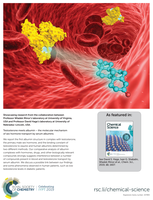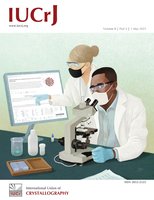Structural Biology
We strive to understand biological systems using a combination of X-ray crystallography and other biophysical techniques. We are currently members of the Center for Structural Genomics of Infectious Diseases, an NIAID project focused on human pathogens. One of our major projects is focused on understanding serum albumin's role as a major transporter of hormones, drugs, and metals in mammalian blood plasma. We also focus on metal binding to proteins and the structural variability observed within crystal structures.
Methodology Development
We strive to increase scientific reproducibility by developing methods and algorithms that help ensure structural models accurately reflect the macromolecules of interest. Our tools are used throughout the world and address a wide range of scientific problems, from diffraction image processing to metal environment geometries to data archiving.
Collaborations
Our worldwide collaborations have been exceptionally fruitful, resulting in joint publications with researchers from 79 different institutions from around the world. An interactive map shows the geographical distribution of these institutions. Additionally, we collaborate with many synchrotron beamlines, in particular, with the Structural Biology Center at the Advanced Photon Source.
SARS-CoV-2 Structure Assessment
Knowledge about the structural components of SARS-CoV-2 is critical in the combat against COVID-19. The structural biology community immediately responded to this global threat by determining structures of many SARS-CoV-2 related proteins. Together with our collaborators (A. Wlodawer, M. Jaskolski, B. Rupp, Z. Dauter, and others) we have assembled a resource (https://covid-19.bioreproducibility.org) providing verified information about these structures, including an assessment of the quality of the resulting structural models and corrected versions of some of these models. Our resource is on the shortlist of structural biology resources currently present on the IUCr webpage.
See a glimps of the lab's research
Web Resources Developed in the Minor Lab
Check My Metal
A web server for the validation of metal binding sites in macromolecules.
MgRNA
Classification of Mg2+ binding sites in RNA crystal structures.
Fitmunk
Automatic modeling of side-chain conformations
ProteinDiffraction.org
Diffraction Experiment Archive - (AKA The Integrated Resource for Reproducibility in Macromolecular Crystallography).
Protein purification and crystallization artifacts
PDB codes that can be used to detect crystallization artifacts using molecular replacement.
Molstack
Platform for sharing electron density maps and their interpretations.
CSGID
We provide data management services for the Center for Structural Genomics of Infectious Diseases.
SARS-CoV-2 Related Structures
We provide an up-to-date assessment of the quality of the structures, as well as corrected versions for some of the deposits.
























